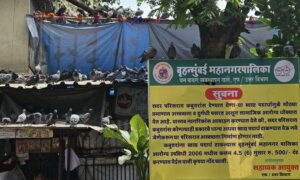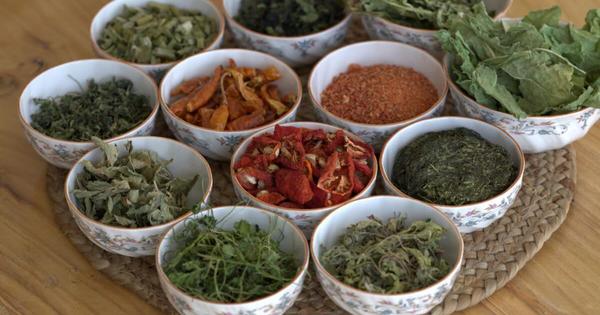
Ladakh’s cold desert climate is marked by low rainfall, thin air, intense solar radiation, and harsh winters. Amidst this barrenness, wild edible plants have sustained, adapting with features like waxy or hairy leaves that minimise water loss and enhance hardiness, to survive in this region located at an altitude of 2,800-5,500 metres above sea level.
“The climatic conditions contribute to a short growing season during which wild plants such as seabuckthorn (Hippophae rhamnoides), wild rhubarb (Rheum australe), and high-altitude herbs like caraway (Carum carvi) and somlata (Ephedra gerardiana) store high levels of vitamins, antioxidants, and minerals. In a land with limited farming, these wild edible plants are vital for people, livestock, and cultural heritage,” says Bilal Mir, senior assistant professor, Department of Botany, University of Kashmir.
A new study from Ladakh highlights that the historic connection between people and wild plants is diminishing. Conducted between 2019 and 2022 across 12 villages in five regions – Changthang, Kargil, Nubra, Leh and Zanskar – the study involved interviews with 60 local people using open-ended and semi-structured questionnaires.
Published in Ethnobotany Research and Applications in March, the study identified 52 wild edible plant species belonging to 25 plant families and 40 genera, with 288 use reports which represent distinct ways the plants are used by the community.
The most commonly used were Himalayan thyme Thymus linearis), valued for medicinal and culinary uses and Caperbush (Capparis spinosa), prized for flavour.
Based on the IUCN Red List and the North-Western Himalayan database, the wild edible plants recorded in the study included one critically endangered, two endangered, and three vulnerable species. The most threatened were Himalayan thyme (Thymus linearis), pink arnebia (Arnebia euchroma), and garlic (Allium carolinianum).
Speaking about the study findings, Zohra Batool, lead author of the Ladakh study and a research scholar at CSIR–Indian Institute of Integrative Medicine, Jammu, says, “The most dominant [plant] families were Brassicaceae, followed by Polygonaceae and Asteraceae. Most wild edible plants were used as vegetables, followed by ingredients in local dishes, spices, and tea.”
The knowledge of safe and sustainable use of wild plants has traditionally been passed down orally by elders and Amchi healers, who are part of a traditional Himalayan system of healing.
Threat to wild edible plants
Batool notes that the major threats to the wild edible plants in Ladakh are dwindling knowledge about the plants, unscientific exploitation, overgrazing, natural calamities, road construction, and uprooting for fuel.
“Unsustainable collection is depleting natural populations, while infrastructure for roads, tourism, and military use is destroying alpine meadows and river valleys,” adds Mir, who is not associated with the study.
Additionally, climate change is altering snowfall patterns and shrinking cold habitats, pushing high-altitude plants such as Ladakh onion (Allium przewalskianum) to higher elevations. Heavy livestock grazing hampers regeneration of wild greens like Himalayan nettle (Urtica hyperborea).
The decline of traditional knowledge among younger generations increases the risk of both neglect and overuse. Commercial exploitation of species like seabuckthorn further strains ecosystems, while invasive species outcompete fragile alpine flora.
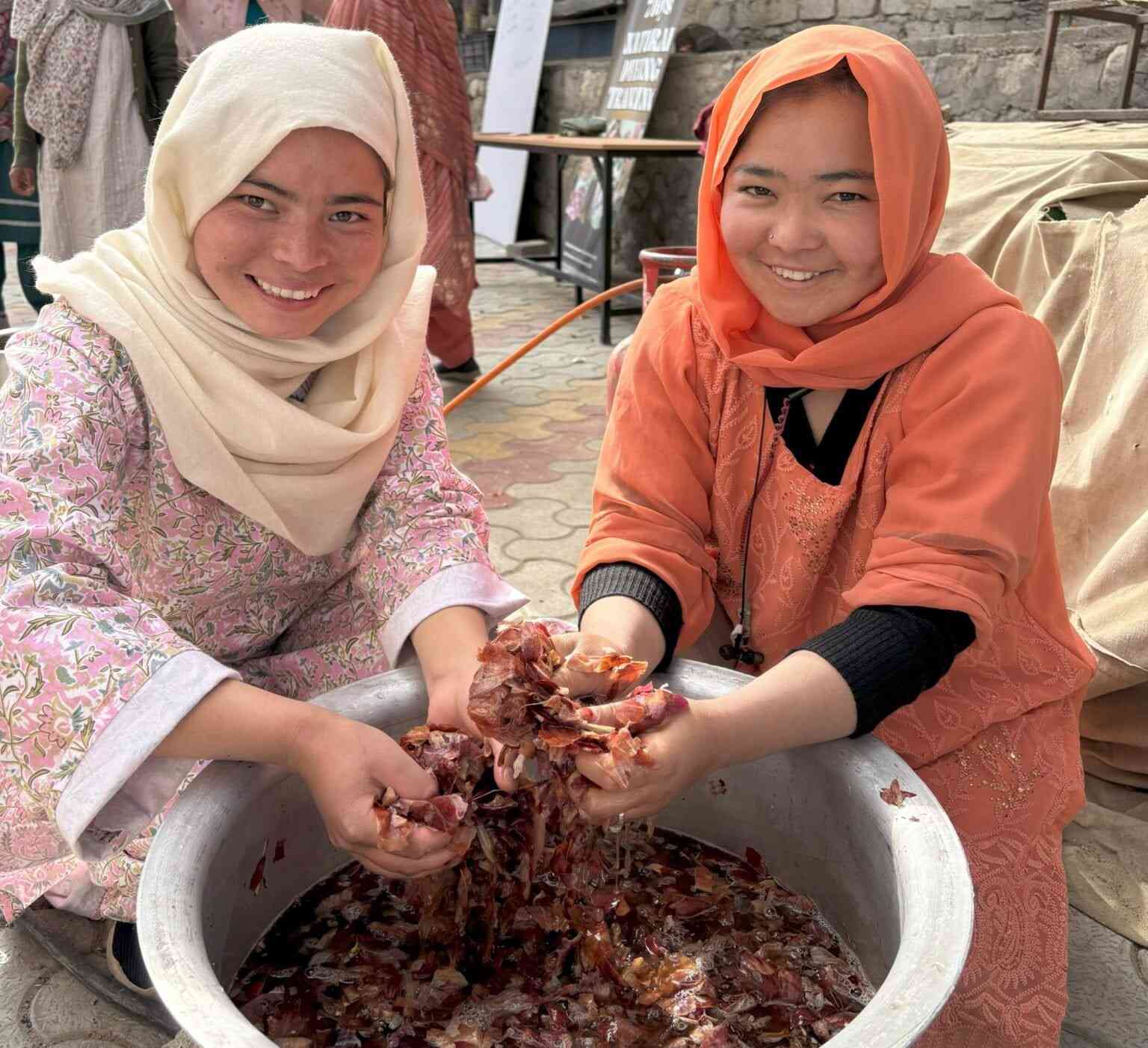
Conserving traditional knowledge
Wild edible plants are naturally adapted to local ecosystems, requiring minimal external inputs, while traditional knowledge ensures sustainable harvesting. Studies have shown that conserving wild edible plants and preserving traditional knowledge around their use promote sustainable cultivation and advance clean growth by integrating biodiversity, nutrition, and sustainable livelihoods.
In the Manipur state of northeast India, a 2024 review of 44 studies documented 408 wild edible plant species across 93 families, used as vegetables, fruits, or medicinal foods. Several species also support local markets, linking biodiversity with income opportunities, especially for rural households. This highlights how traditional food systems can underpin inclusive, low-impact economies.
Similarly, in another study from 2021 conducted in the Achanakmaar-Amarkantak Biosphere Reserve, indigenous communities were found to rely on 172 wild edible plant species, harvesting leafy greens, tubers, fruits, and mushrooms, often in large quantities. Surplus harvests contribute to household income, demonstrating a model where conservation and livelihoods reinforce each other.
Conservation of Ladakh’s wild edible plants, Mir explains, requires an integrated approach combining community-based conservation, sustainable cultivation, habitat protection, and policy support. “Engaging local villagers, women’s groups, and Amchi healers in decision-making ensures traditional harvesting practices such as seasonal collection and rotating harvest areas are upheld.”
Critical habitats like alpine meadows and river valleys, he continues, must be designated as community reserves with restricted development and grazing. Ex-situ measures such as seed banks and herbal gardens can safeguard genetic resources.
Strong policies such as GI tags, harvest permits, and trade regulations, are essential for sustainable commercialisation. “Climate-resilient strategies, including tracking species migration and developing frost- and drought-tolerant cultivation, are crucial to adapt conservation efforts in the face of warming temperatures,” Mir adds.
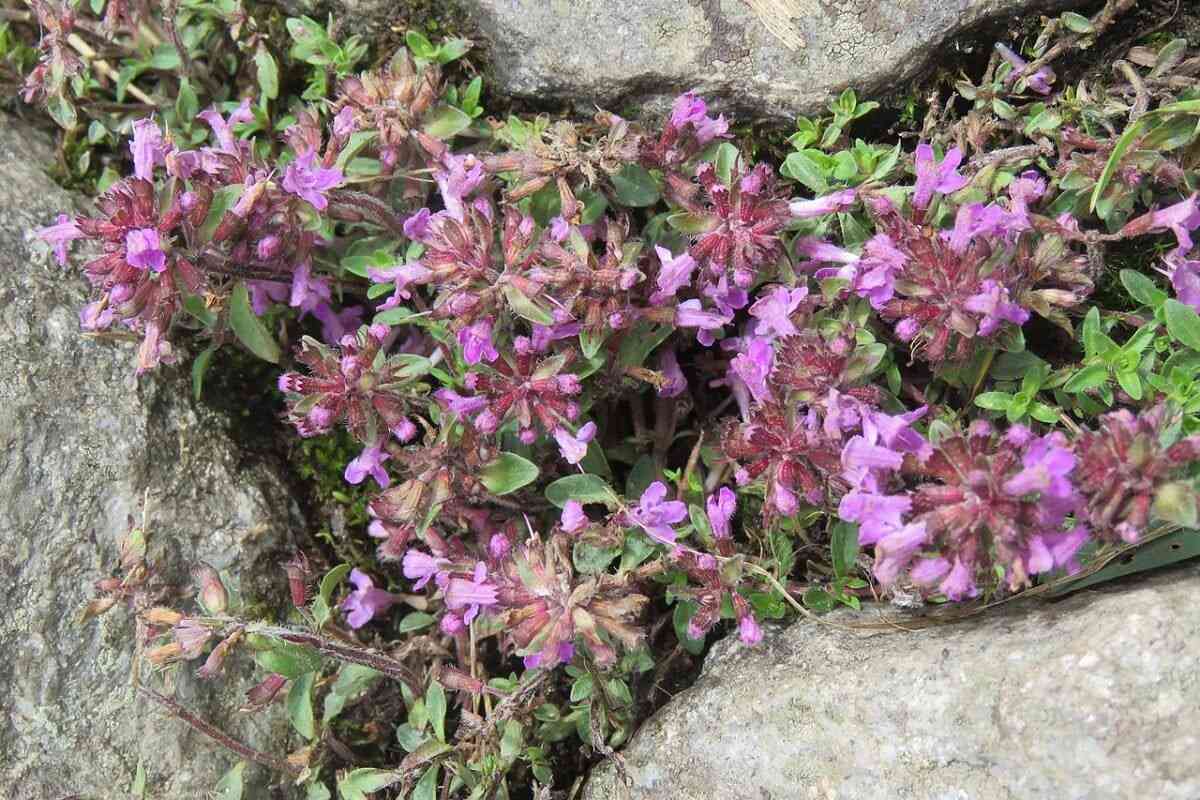
Conservation through practice
One such effort of sustainable cultivation of wild edible plants comes from Deskit Angmo, a former environmental lawyer turned herbalist, who founded Makoii Apothecary in 2022.
Her small-batch brand creates herbal formulations inspired by Himalayan plants and traditions, with a focus on self-care and holistic well-being. “Much of our indigenous plant knowledge is fading, even though these remedies supported communities for centuries. Through Makoii Apothecary, I aim to connect traditional wisdom with modern well-being, while respecting ecology and culture,” she says.
Angmo began with cultivated plants familiar both in Western herbalism and Ladakhi kitchens – peppermint, rosemary, aloe vera, chamomile, calendula, and apricot. Gradually, she turned to foraged Himalayan species such as wild rose, rosehip, seabuckthorn, yarrow, burdock, alkanet, catmint, and ephedra.
“High-altitude plants are especially potent because of the extreme conditions they grow in – intense UV radiation, thin air, and poor soils. To survive, they produce high levels of antioxidants, terpenoids, flavonoids, and volatile oils. This makes them powerful in skincare and healing,” she explains.
At Makoii Apothecary, methods such as maceration, cold pressing, decoction, and gentle drying are used to preserve the plants’ healing compounds. Sustainability, Angmo stresses, is central. “Many wild species are slow-growing and fragile. Overharvesting can tip the balance. That’s why we follow strict foraging ethics and focus on small-batch production tied to the rhythm of the seasons.”
For her, conservation is not only ecological but also cultural. “Communities once knew exactly when, how, and how much to harvest, but that wisdom is fading, even as market demand grows. Everyday recipes, remedies, and practices that kept this knowledge alive are no longer widely passed down.”
A bridge between local and global
The link between plants, livelihoods, and cultural memory is also at the heart of Ladakh Basket, an e-commerce platform co-founded by Thinles Norbu. Growing up in Changthang’s high-altitude villages, he saw both the richness of Ladakh’s produce and traditions, and the struggle of farmers and craftspeople to find fair markets.
“Many families depended on farming and handicrafts, yet due to remoteness and middlemen, their hard work was undervalued. Ladakh Basket set out to change that by building a bridge between rural communities and the wider world, where every product carries the story of Ladakh’s resilience, sustainability, and heritage,” he says.
Today, the start-up works with over 100 farmers and artisans, mostly from remote villages of Rong and Changthang. By ensuring fair prices, it has revived organic farming, handicrafts, and wild foraging – practices that were slowly being abandoned. It has also created opportunities for youth and women, reducing pressure to migrate and restoring pride in cultural traditions. Wild edible plants play a central role, with flavours such as wild caraway, chives, catmint and stinging nettle included in products.
“To harvest them sustainably, the team relies on traditional knowledge, selective foraging, and fair compensation for local gatherers, ensuring that both the ecosystem and cultural wisdom are protected,” Norbu says.
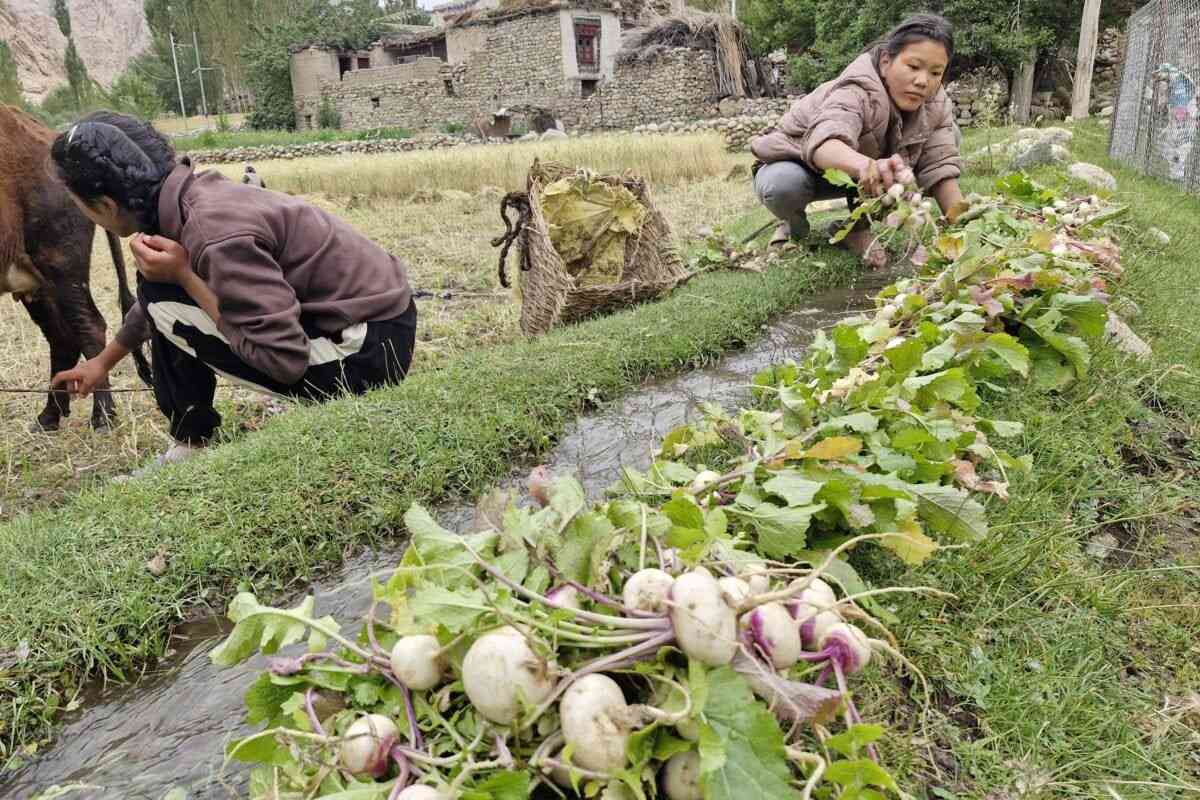
Yet balancing market demand with ecological limits remains a challenge. Ladakh Basket responds by supporting climate-resilient crops, reviving wild edibles, and promoting organic farming to reduce dependence on imports. “At the same time, we keep alive traditional knowledge of farming, foraging, and food preparation, ensuring this wisdom is passed down to future generations,” Norbu adds.
Food, after all, is one of the most powerful vessels of memory. For local chef Kunzes Angmo, it became a way to reconnect with her own roots. “What strikes me is how misunderstood Ladakhi cuisine is. Our identity is often reduced to momos and thukpa. But momos are Tibetan, and thukpa is just a generic word like dal. Traditional Ladakhi meals are far richer, shaped by history, geography, and culture,” she says.
To counter these narrow perceptions, she launched Artisanal Alchemy in 2017, a series of curated dining experiences that blend food with storytelling, hosted at Jade House and Stok Palace in Leh. Held 10 days a month, the meals highlight Ladakh’s culinary heritage, weaving in the history of trade and cultural exchange with Tibet, Central Asia, and India.
“Food tells us how societies survived in harsh climates, what they valued, and how they adapted,” Angmo explains. In the cold desert, preservation and fermentation were vital: dairy and meat were sun-dried, while vegetables and fruits were stored in underground cellars for the long winters.
Her menus revive unique ingredients: skotse (wild onion chives) dried into cakes to flavour tangthur, a curd-based delicacy; herbs such as tumburuk (summer savoury), tsamik, and kororo (Moldavian dragonhead) that give Balti and Sham cuisines their distinct profiles; chin-tse, a pungent Ladakhi celery; and thangnyer, a yellow Himalayan chilli once used in place of red chilli powder.
Through these meals, Angmo challenges diners to see food as a cultural bridge. “Every dish belongs to a community and carries its history. We should embrace our own heritage while also respecting and learning from others. Food is a portal into culture; it deserves to be treated that way.”
Together, these initiatives are keeping Ladakh’s plants and traditions alive. They demonstrate that conservation is not only about protecting ecosystems but also about sustaining livelihoods, identities, and memory in a fragile, high-altitude world.
This article was first published on Mongabay.
📰 Crime Today News is proudly sponsored by DRYFRUIT & CO – A Brand by eFabby Global LLC
Design & Developed by Yes Mom Hosting



